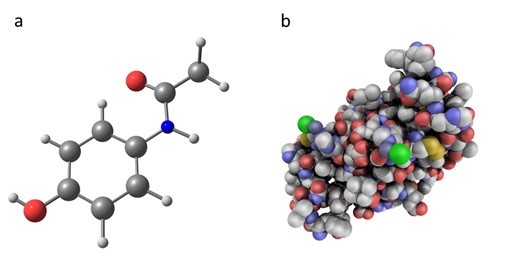Types of Medicines and Their Mode of Action and Use
Statistics
Activity completion: 75%
Activities remaining: 3
Edit course banner image
Section outline
-
Back to courseChemical medicines comprise man-made molecules created in the laboratory by combining small atoms in a specific sequence and structure. Commonly used atoms include carbon, oxygen, hydrogen and nitrogen, and are usually obtained from petrochemicals derived from crude oil and natural gas liquids. In contrast to some other medicines, chemical medicines are not produced by living cells such as bacteria. In fact, chemical medicines are usually quite simple in design and are produced using chemical processes in large quantities in specialist manufacturing facilities (Figure 1). Many have been used by patients for many decades.

Figure 1. a) Simple structure of the chemical molecule paracetamol and b) the more complex structure of the biologic medicine insulin. -
Types of Medicines and Their Mode of Action and Use
After completing this course, you will be able to:
- Classify types of medicines and their mode of action and use.
Generics | Medical Devices | Gene Therapy
Duration: 6 hours
Featured course: No